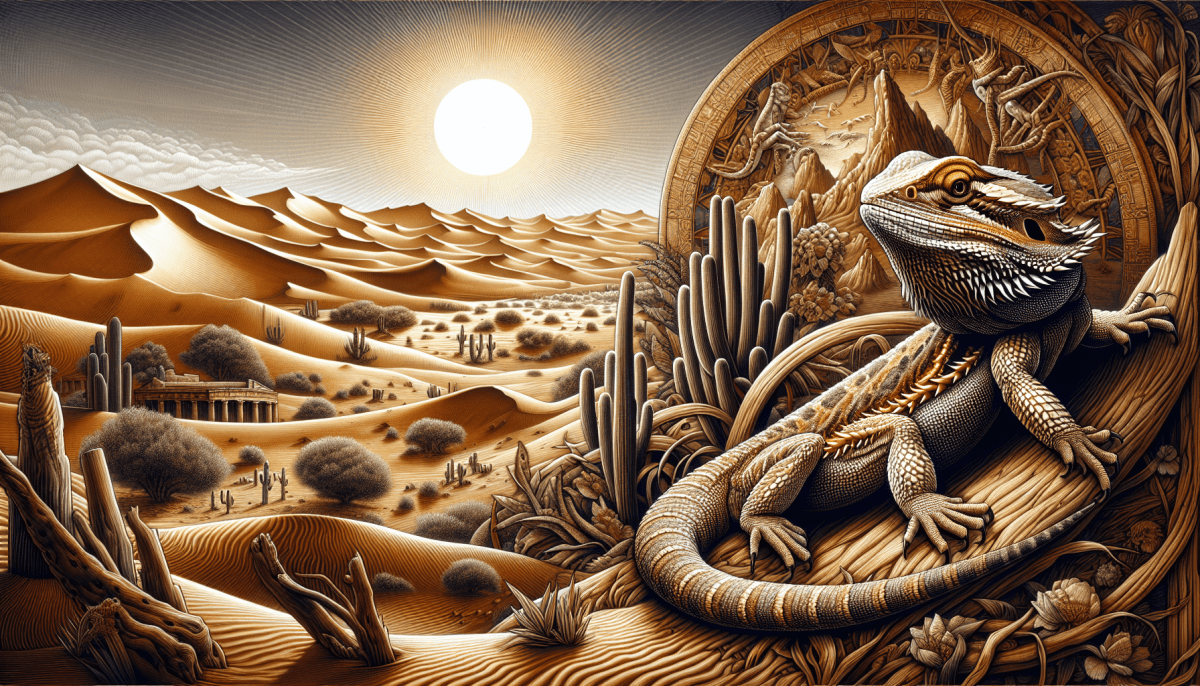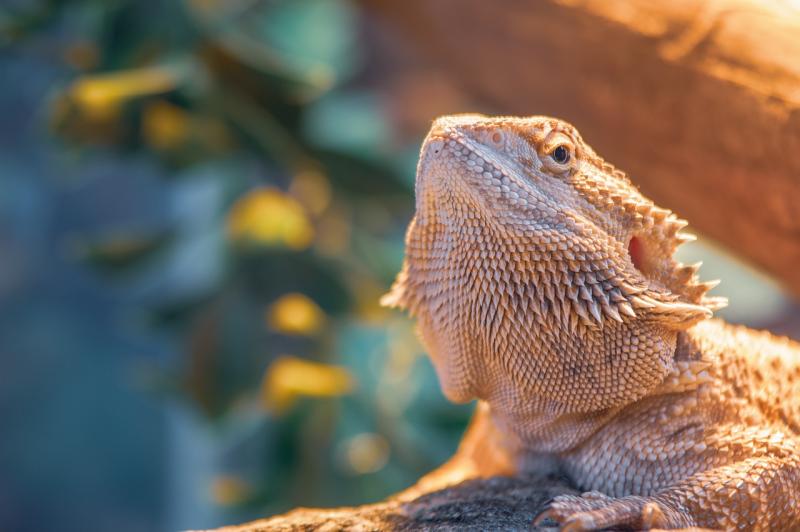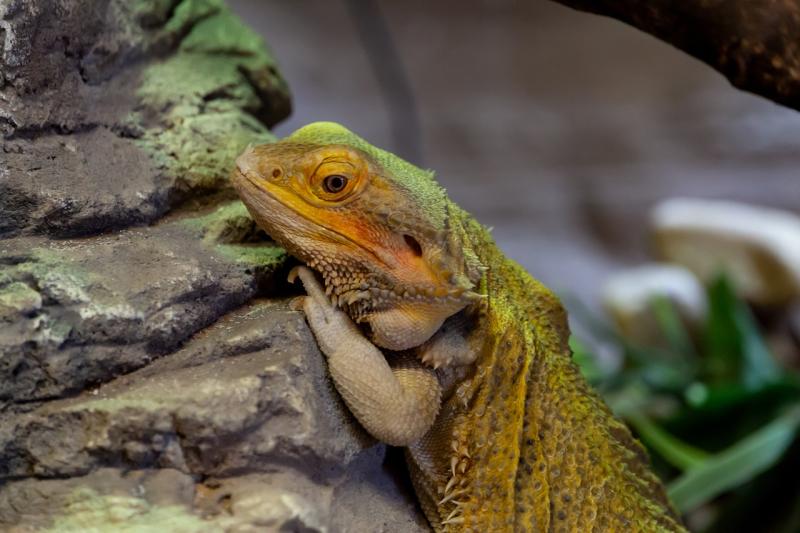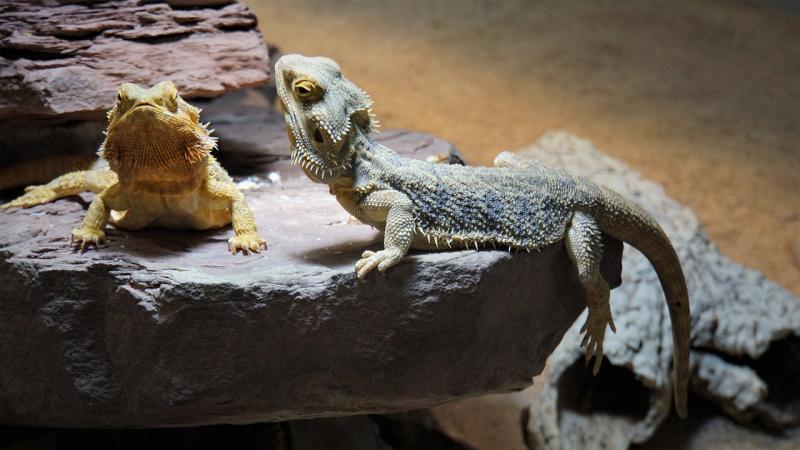Bearded dragons, with their striking appearance and docile nature, have become increasingly popular pets in recent years. These reptiles, native to the arid regions of Australia, are known for their unique ability to puff out their throats, resembling a fearsome beard, hence their name. But have you ever wondered about the captivating past of these fascinating creatures? Join us as we delve into the enigmatic origins of bearded dragons.
Ancient Beginnings
The story of bearded dragons dates back millions of years, to a time when Australia was part of a larger landmass known as Gondwana. It was during this period that the earliest ancestors of bearded dragons emerged. Fossils discovered across Australia provide evidence of their presence, offering glimpses into their remarkable past.
The bearded dragon family, scientifically known as Pogona, evolved from an ancient lineage of lizards. Over time, they developed unique characteristics that set them apart from their reptilian relatives. Today, there are eight recognized species of bearded dragons, each with its own distinct traits and habitats.
The Great Divergence
As Australia drifted away from Gondwana and its surrounding landmasses, bearded dragons found themselves in isolation. This geographic separation led to the diversification of the species, as they adapted to their specific environments. The diverse ecosystems of Australia provided ample opportunities for these reptiles to evolve and develop various specialized features.
One of the most noticeable traits of bearded dragons is their ability to change color. This remarkable adaptation plays a crucial role in their camouflage, allowing them to blend seamlessly into their surroundings while hunting or evading predators. The different terrains and vegetation across Australia influenced the evolution of distinct coloration patterns within various bearded dragon species.
An Unmatched Legacy
Bearded dragons have not only adapted to their surroundings but have also become masters of survival in the harsh Australian desert. Their ability to regulate body temperature by basking in the sun or seeking shade helps them thrive in extreme conditions. Furthermore, their diet consists of a wide variety of vegetation, small animals, and even insects, ensuring they can find sustenance despite the arid landscape.
The captivating past of bearded dragons, intertwined with the rich history of Australia, serves as a testament to their resilience. Their unique characteristics and behaviors have charmed reptile enthusiasts and researchers alike, making them subjects of extensive study. Understanding the evolution and origins of these mesmerizing creatures not only sheds light on their captivating story but also enhances our appreciation for the incredible diversity of life on Earth.
So, the next time you find yourself gazing into the eyes of a bearded dragon, take a moment to appreciate its ancient lineage and the remarkable journey that has brought these captivating reptiles into our lives.
From Prehistoric Pioneers to Popular Pets: Evolutionary Journey
As we trace the captivating past of bearded dragons, we embark on a journey that spans millions of years. These fascinating reptiles have a rich evolutionary history, captivating researchers and pet enthusiasts alike.
The story of bearded dragons begins in the prehistoric times, when their ancestors roamed the lush landscapes of Australia. Fossil records date back to the early Miocene era, roughly 20 million years ago. These ancient reptiles were part of an extraordinary ecosystem, coexisting with other remarkable creatures that shaped the continent's biodiversity.
Over time, bearded dragons underwent significant adaptations to survive in their ever-changing environment. Their most iconic feature, the beard, evolved as a defense mechanism. When threatened, these dragons puff out the spiny scales under their chin, forming an impressive "beard" that adds an intimidating aspect to their appearance.
One of the key factors behind the bearded dragon's success is their ability to adapt to diverse habitats. From arid deserts to woodlands, these resilient reptiles have mastered the art of survival in various terrains. Their exceptional tolerance for fluctuating temperatures and scarcity of resources has allowed them to thrive in the harsh Australian landscape.
Fast forward to modern times, where bearded dragons have carved a place in the hearts of reptile enthusiasts worldwide. Thanks to their calm temperament and captivating appearance, they have become increasingly popular as pets. With the development of appropriate husbandry techniques and advancements in reptile care, more people are discovering the joy of sharing their lives with these prehistoric pioneers.
However, their popularity in the pet trade has raised concerns about their conservation status in the wild. Habitat loss, climate change, and illegal poaching pose threats to the survival of this incredible species. Efforts are being made to protect their natural habitats and ensure sustainable practices in captivity.
The remarkable journey of bearded dragons takes us back to a time long before humans roamed the Earth. From their prehistoric origins to becoming beloved pets in modern households, their evolutionary path is a testament to their incredible resilience. As we continue to learn more about these fascinating reptiles, we are reminded of the interconnectedness of all living beings and the importance of preserving their place in our world.
Ancient Mythology and Cultural Significance of Bearded Dragons
Bearded dragons have long been subjects of fascination due to their unique physical attributes and captivating behavior. However, these intriguing creatures have also played significant roles in ancient mythology and cultural beliefs across various civilizations. Let's take a closer look at the rich history that surrounds bearded dragons and their cultural significance.
Ancient Egypt: Guardians of the Afterlife
In ancient Egyptian mythology, bearded dragons held a special place as guardians of the afterlife. They were deeply associated with the powerful sun god Ra and were believed to have the ability to traverse different realms. It was said that when a pharaoh died, their soul would be guided by a bearded dragon through the treacherous journey of the afterlife. This profound belief highlights the revered position of these creatures in Egyptian culture.
Ancient Chinese Culture: Symbols of Goodluck
The bearded dragon has also been a symbol of good luck and prosperity in ancient Chinese culture. With their unique appearance and ability to puff out their throats, they were considered a symbol of power and strength. The Chinese associated these traits with good fortune, and it became common to place images or figurines of bearded dragons in homes and businesses to attract positive energy. They were believed to bring prosperity and success in various aspects of life, including business and relationships.
Aboriginal Dreamtime: Creation and Storytelling
Within Aboriginal Australian Dreamtime, bearded dragons played a central role in creation myths and storytelling. These mythical stories were passed down through generations and were an essential part of Aboriginal culture. Bearded dragons were often portrayed as ancestral beings that shaped the land and its inhabitants. Their stories carried important lessons of survival, adaptability, and coexistence with nature. Aboriginal art frequently featured depictions of bearded dragons, symbolizing the connection to their spiritual beliefs and cultural heritage.
Modern Day Fascination
Today, bearded dragons continue to captivate people around the world. They are commonly kept as pets, admired for their docile nature, and fascinating behaviors. Their cultural significance, rooted in ancient mythology and beliefs, adds an extra layer of intrigue to these incredible reptiles. Understanding the historical and cultural contexts surrounding bearded dragons enhances our appreciation for their remarkable presence in our world.
In conclusion, the ancient mythology and cultural significance of bearded dragons are remarkable aspects that deepen our fascination with these creatures. From being sacred guides in Egyptian afterlife beliefs to symbols of good fortune in Chinese culture and integral figures in Aboriginal Dreamtime stories, bearded dragons have left an indelible mark throughout history. Today, their presence as pets and objects of admiration continues to remind us of the captivating past they embody.



